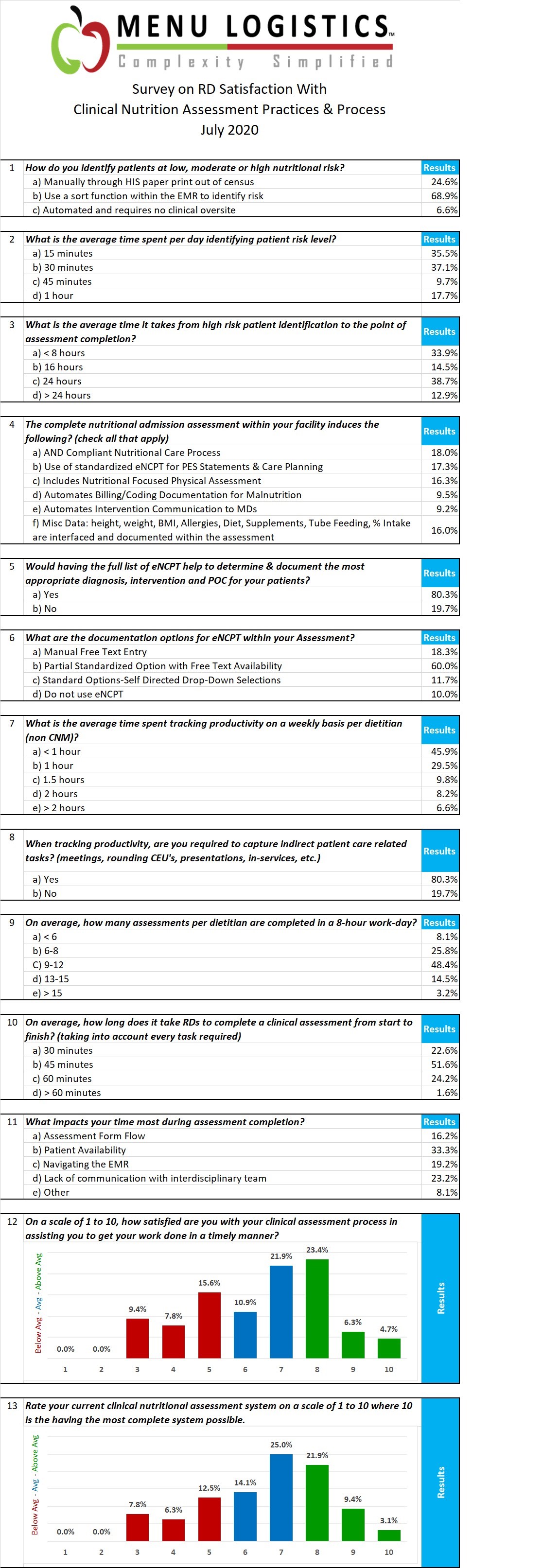Unfortunately, the availability to do everything stated above within current HIS systems simply does not exist. Even if departments chose to work with HIS vendors to update the current nutrition assessment offerings, it could be a very timely process, end up being very costly and quickly become outdated due to the inability to get continual updates.
Access to systems and workflows that are designed strictly for the use of nutrition care management will improve timeliness of assessment completion, resulting in earlier initiation of nutritional intervention, thorough and effective documentation that will ensure compliance and reimbursement opportunities, and most importantly will improve the productivity and satisfaction of RDs. When employees feel they have been given the proper tools to complete their work, every day hurdles tend to disappear and consequently, patient care will improve.

